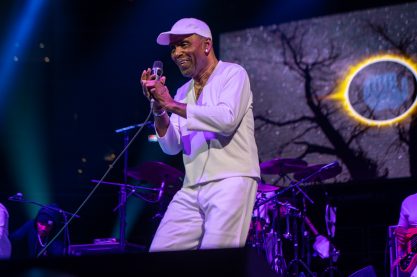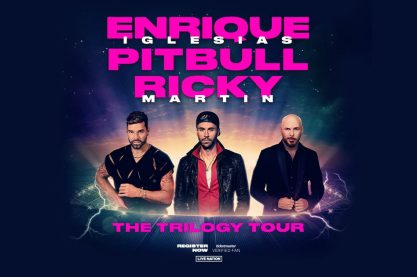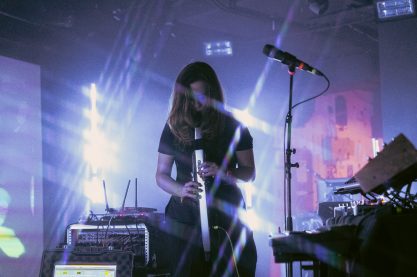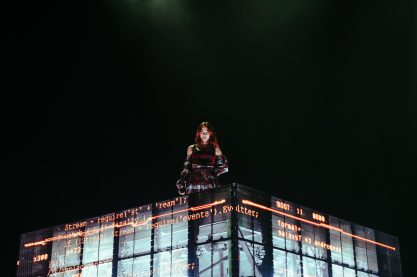Music
MOOMBAHTON – A Primer – Part Two

Let's clearly state that moombahton was an accident. Dave Nada's invention wasn't borne of some mad scientist need for the DJ and producer to place his enduring stamp on electronic dance music. He was already safely well along that path, a history with tremendous and technically sound Baltimore club edits that stretched the genre into classic rock and punk circles cementing his legacy as a top remixer. For the last two years, he has worked alongside noted Grammy award winning remixer and producer for locally borne but internationally respected act Deep Dish, Matt Nordstrom as Nadastrom. The duo has found a way to channel the mainstream tendencies of progressive and electro house into some of the most accessible and dance floor ready remixes in recent memory.

Roughly one month into the development of moombahton, it was announced that Mexican DJ and producer extraordinaire Toy Selectah was playing a few gigs in the United States. As a producer, Selectah is untouchable. His background involves being a key developer of every major Latin crossover sound of the past 20 years. Cumbia, reggaeton, pop trending takes on salsa and merengue and Latino hip hop have all either been recorded, produced, A & R'ed or signed to deals by him as an artist, producer or Latin label executive. He also works very closely with Mad Decent Records, his skills as a remixer recently used by Vampire Weekend for remixes of tracks from their latest album Contra.
Upon hearing of moombahton, Selectah immediately made mention that the concept of blending Latin music styles and house music was not new. No, he wasn't discussing the 80s and early 90s Latin/house blend known as freestyle which gave birth to acts like TKA, The Cover Girls and Lisa Lisa and Cult Jam, but a more recent development, "raverton." In blending the expansive sounds of trance and electro synths and percussive elements with traditional cumbia and reggaeton, "raverton" had existed for nearly a decade and was a popular craze in underground Mexican clubs. As of recently, a younger set of "raverton" loving DJs, led by the likes of Sheeqo Beat have embraced a far heavier and darker style still dipped in traditional sounds, 3-Ball (read as tribal) that is moombahton's relative below the border. Selectah's cosign on the moombahton sound was important as in having the vaunted Mexican veteran give cred to the work of Nada and others, the sound would have died.
Also key to the sound's development was the importance of Bersas Discos Records. Run by Turntable Lab affiliated NYC remixer, DJ and producer DJ Sabo, the label specializes in the rescue and reprint of rare Latin sounds, cumbia included. Upon learning of the concept of moombahton, Sabo alongside fellow label mates Disco Shawn and Oro 11 took a shine to the sound, and on July 3rd at DC's U Street Music Hall, a new height was found for the sound as the "Tormenta Tropical" party took place, and an entire room was entranced by the hypnotic sway of what had originally tarted as Dutch house stripped to it's base elements with reggaeton accents became something more authentically Latin. Due to the involvement of those who had kept the traditional Latin sounds vibrant and important, who also had a knowledge of house music, the sound had the ability to develop at a far more accelerated pace than originally expected.
If You Leave by Rampage & Nader
The cosign of those who had historical knowledge and skill with the sound was key. It opened the floodgates for a plethora of producers with Latino roots who were first or second generation American citizens to open themselves back up to sounds that were likely a part of their formative youth. If those like Sabo and Toy Selectah who were known and vaunted purveyors of the rich traditions of Latin music could make contributions, then for certain those in the Southwest like Arizona's DJ Melo and Midwest like Chicago's Ghetto Division crew representatives Rampage and Nader especially could have immediate cache and importance. Let that trickle down to those who just thought the sound was cool, and you had a horse of a different color and a musical style that rather quickly was becoming the most important new breed of underground sound since Baltimore club's resurgence in the early 2000s.
As we continue our search into the heart of the new sound of moombahton, we will discuss the key players in the sound, and it's rapid development and stewardship. Enjoy!




